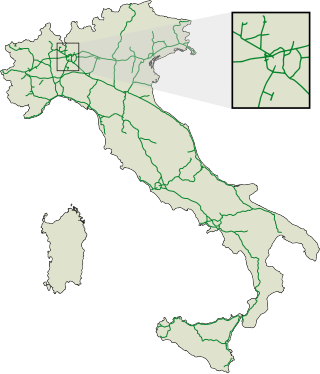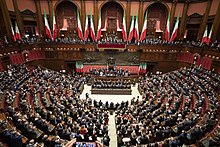
A decree is a legal proclamation, usually issued by a head of state such as the president of a republic, or a monarch, according to certain procedures. It has the force of law. The particular term used for this concept may vary from country to country. The executive orders made by the President of the United States, for example, are decrees.

Abortion laws vary widely among countries and territories, and have changed over time. Such laws range from abortion being freely available on request, to regulation or restrictions of various kinds, to outright prohibition in all circumstances. Many countries and territories that allow abortion have gestational limits for the procedure depending on the reason; with the majority being up to 12 weeks for abortion on request, up to 24 weeks for rape, incest, or socioeconomic reasons, and more for fetal impairment or risk to the woman's health or life. As of 2022, countries that legally allow abortion on request or for socioeconomic reasons comprise about 60% of the world's population. In 2024, France became the first country to explicitly protect abortion rights in its constitution.

The Constitution of the Italian Republic was ratified on 22 December 1947 by the Constituent Assembly, with 453 votes in favour and 62 against, before coming into force on 1 January 1948, one century after the previous Constitution of the Kingdom of Italy had been enacted. The text, which has since been amended sixteen times, was promulgated in an extraordinary edition of Gazzetta Ufficiale on 27 December 1947.

The autostrade are roads forming the Italian national system of motorways. The total length of the system is about 7,016 kilometres (4,360 mi), as of 30 July 2022. To these data are added 13 motorway spur routes, which extend for 355 kilometres (221 mi).
Acta Apostolicae Sedis, often cited as AAS, is the official gazette of the Holy See, appearing about twelve times a year. It was established by Pope Pius X on 29 September 1908 with the decree Promulgandi Pontificias Constitutiones, and publication began in January 1909. It contains all the principal decrees, encyclical letters, decisions of Roman congregations, and notices of ecclesiastical appointments. The laws contained in it are to be considered promulgated when published, and effective three months from date of issue, unless a shorter or longer time is specified in the law.

Quebec law is unique in Canada because Quebec is the only province in Canada to have a juridical legal system under which civil matters are regulated by French-heritage civil law. Public law, criminal law and federal law operate according to Canadian common law.

The Law of Portugal is part of the family of the civil law legal systems, based on Roman law. As such, it has many common features with the legal systems found in most of the countries in Continental Europe.

Lesbian, gay, bisexual, and transgender (LGBT) rights in Italy significantly advanced in the 21st century, although LGBT people still face various challenges not experienced by non-LGBT residents, despite public opinion being increasingly liberal and in favor of LGBT rights. According to ILGA-Europe's 2021 report, the status of LGBT rights in Italy is below the standards of other Western European countries – such as still not recognizing same-sex marriage, lacking nationwide discrimination protections for goods and services, as well as not granting to same-sex couples parental rights, such as adoption and IVF. Italy and Japan are the only G7 nations where same-sex marriages are not permitted.

Lesbian, gay, bisexual, and transgender (LGBT) people in San Marino may face legal challenges not experienced by non-LGBT residents. Both male and female same-sex sexual activity are legal in San Marino, but households headed by same-sex couples are not eligible for the same legal protections available to opposite-sex couples.

The use of capital punishment in Italy has been banned since 1889, with the exception of the period 1926–1947, encompassing the rule of Fascism in Italy and the early restoration of democracy. Before the unification of Italy in 1860, capital punishment was performed in almost all pre-unitarian states, except for Tuscany, where, starting from 1786, it was repeatedly abolished and reintroduced. It is currently prohibited by the Constitution of the Italian Republic with no more exceptions even in times of war.

The Council of Ministers is the principal executive organ of the Government of Italy. It comprises the President of the Council, all the ministers, and the Undersecretary to the Prime Minister. Deputy ministers and junior ministers are part of the government, but are not members of the Council of Ministers.

The Ministry of Enterprises and Made in Italy, commonly known under the shortening of its pre-2022 name, MISE, is a government ministry of the Italian Republic. It deals with production, economic activities, energy and mineral resources, telecommunications, consumers, tourism, internationalisation and business incentives. It was formed in 2006 after the reorganization of the Ministry of Productive Activities to which were merged the Ministry of Communications and the Ministry of International Trade in 2008.

The judiciary of Italy is composed of courts responsible for interpreting and applying the law in the Italian Republic. Magistracy is a public office, accessible only to Italian citizens who hold an Italian Juris Doctor and have successfully partaken in one of the relevant competitive public examinations organised by the Ministry of justice. The judicial power is independent and there is no internal hierarchy within. Italian magistrates are either judges or public prosecutors.
Articles 108 through 108-C of the Penal Code of Peru define crimes similar to those known as murder in Anglophone countries. The term asesinato ("murder") is no longer used in the Penal Code since 2014.

The Ministry of Economy and Finance, also known by the acronym MEF, is a ministry of the Italian government. Its responsibilities include overseeing economic policy, public investments and spending. The Ministry's headquarters are located in Rome's historic Palazzo delle Finanze. The current minister in the Meloni Cabinet is Giancarlo Giorgetti.
Articolo 18-bis Legge 91/1981, also known as Decreto Spalmadebiti and Decreto Salva Calcio, is an Italian decree-law introduced in 2003 by Law no. 27 of 2003, itself ratified the Law no. 282 of 2002 issued by the then Prime Minister of Italy and owner of AC Milan, Silvio Berlusconi, for which reason the law was considered among Berlusconi's many ad personam laws and an example of sportwashing. Officially known as the Tax Law Decree: 2.5% Tax Shield, Disposal of Properties and VAT Numbers, it was issued by the second Berlusconi government on 24 December 2002 and then converted into law by the Italian Parliament on 21 February 2003 with the Law no. 27 of 2003.

A constitutional referendum was held in Italy on 4 December 2016. Voters were asked whether they approved a constitutional law that amends the Italian Constitution to reform the composition and powers of the Parliament of Italy, as well as the division of powers between the State, the regions, and administrative entities.
The law of Peru includes a constitution and legislation. The law of Perú is part of the Roman-Germanic tradition that concedes the utmost importance to the written law, therefore, statutes known as leyes are the primary source of the law.
The Corps of Volunteer Nurses of the ACISMOM is an exclusively female unit of the Military Corps of the ACISMOM, and an auxiliary unit of the Italian Army.
The Italian public administration, in the Italian legal system, indicates the set of public bodies belonging to the public administration of the Italian Republic.

















